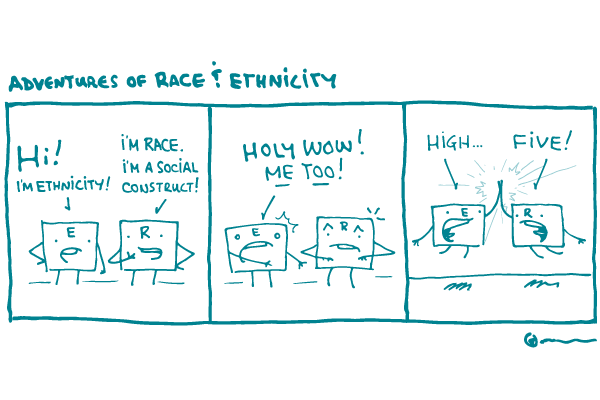
As health communicators, we know it’s our responsibility to choose our words carefully — especially when we’re tackling topics like gender or disability. This goes for race and ethnicity, too. But not to fear, dear readers — we’re here to clear things up!
First things first: although they can overlap, race and ethnicity aren’t the same thing, so you can’t just use the words interchangeably. It’s also important to note that these words can mean different things to different people depending on their experiences. Here’s our take:
- Ethnicity is a social construct. It’s how people identify with their culture, including its religion, traditional practices, and language — regardless of where they were born or how they look. For example, you could say someone’s ethnicity is Chinese or Irish.
- Race is also a social construct — and a complicated one at that. But unlike ethnicity, it’s based on generalizations about physical features like skin color. For example, you could say someone’s race is white, black or African American, or Native American.
Despite being social constructs, race and ethnicity are very real — and in public health, we often need to talk about them. So what’s a health communicator to do? Here’s our advice:
Don’t ignore it. Of course, there are plenty of times when race just isn’t relevant. But if it is, go ahead and say so. For example, if you’re writing about high blood pressure, it makes sense to note that African Americans are at higher risk.
Provide context. If you’re writing about a health disparity with a known cause, consider mentioning it. For example, if you say that black children are more likely to be suspended from school than white children, put that information in context by also noting that teachers often suspend black children more quickly than white children for the same behavior.
Be as specific as you can. Check out these 2 sentences:
- Age, race and ethnicity, and weight can increase your risk for developing high blood pressure.
- Some groups of people are more likely to have high blood pressure, including African Americans, people age 40 or older, and people who are overweight.
The first sentence leaves the reader wondering who is actually at higher risk, while the second one gets right to the point — and you know how much we ❤︎ that.
Follow the golden rule. Treat others as you’d like to be treated. In this case, that means referring to racial and ethnic groups using the terms that they prefer.
The bottom line: When writing about race and ethnicity, give it the extra thought it deserves.
Browse recent posts